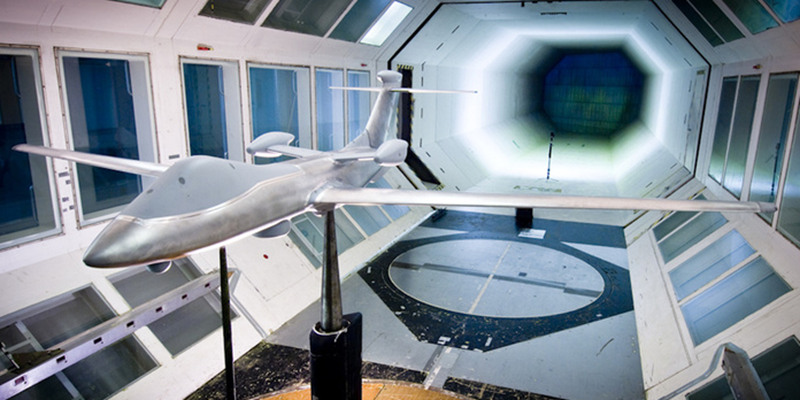Posted on: Dec. 23th, 2020, | By WayKen Rapid Manufacturing
Among the toughest majors of engineering globally, aerospace and aeronautical engineering arguably top the lists. Any engineer reading through this article might be familiar with the usual design cycles involved in the design of any product, but it is the level of intricacy required in the field of aviation that makes it so challenging.
Modern aircraft design faces stringent operational, environmental, and financial challenges. A massive paradigm shift is being noticed on how complex systems are designed and how to avoid design flaws like in the case of the latest Boeing 737 Max. In this article, we will discuss the flow of a modern aircraft design cycle and instances where using the services of a prototype manufacturer for scaled testing can save the day.
Explore more the details of industrial design prototyping here.
Design Cycle of a Modern Aircraft
Every designer reading this article might be familiar with the three basic design phases i.e. Conceptual, Preliminary and Detailed Design. However, fierce competition among market players with high expectations from customers means a company has to innovate remarkably in the design phases to meet diverse criteria. Let us discuss the design cycle of an aircraft based on the life cycle cost with aid of the following diagram.
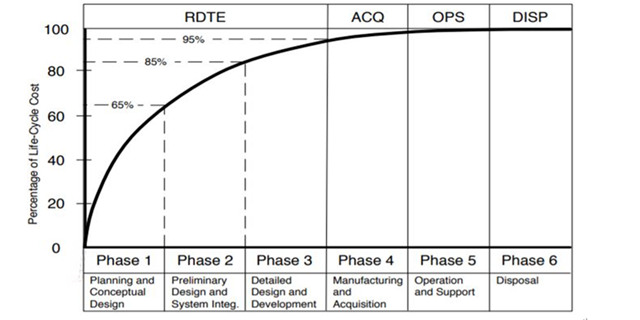
As you can see, the first three phases prior to the manufacturing stage amount to 95% of the entire cost. Among the initial three phases, the most important is Phase 1 i.e. Planning and Conceptual Design. Therefore, let us focus on the first phase in detail followed by the other two.
Planning and Conceptual Design
The initial step is marked by a feasibility study which determines whether a requirement can be met with existing technology or not. Moreover, the feasibility study also helps to optimize the path for a project i.e. complete redesign which means the highest risk and cost or adoption/modification of existing design. Following this, the conceptual design phase starts. Any aircraft designer knows Raymer and Roskam models very well and as they outline, the conceptual design phase involves answering the following basic questions:
- Will it work?
- What does it look like?
- What are the requirements?
- How to optimize the tradeoffs?
- How to optimize weight and costs?
The ultimate goal of the conceptual design stage is to identify and prepare a feasible and optimal design concept for further refinement. This phase thus involves crafting, studying, and examining various design concepts, all with minimal knowledge of experimental outcomes and limited data regarding the design’s practicality. The graph below this paragraph depicts the greater range of uncertainty during the conceptual stages as compared to the advanced stages. Adding to this, a whopping 65 percent of the lifecycle cost incurring during this stage means that any change to the basic design, later on, means a reduction in overall revenues and extension in deadlines.
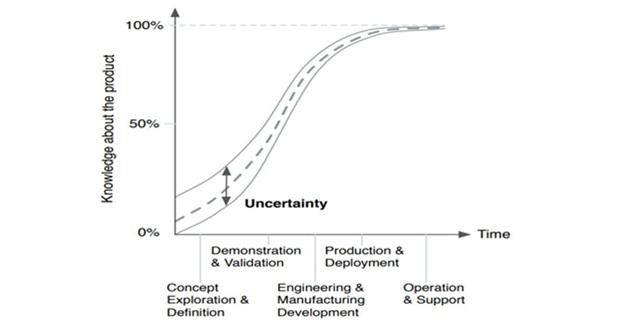
The dilemma commonly faced in the conceptual design phase is the start of a design program without clearly outlining a set of requirements to be met. Outlining market requirements and getting the customers to make their expectations explicitly known is so important. Refining requirements at a later stage result in an uneconomical and inefficient approach and such a design cycle has severe implications on the lifecycle costs incurred. In the case of an aircraft design, there are multiple often conflicting set of requirements and expectations set out by customers. A diverse and complex set of aircraft systems based on various parts of an aircraft e.g. wings, engine, fuselage, landing gear, tail, and canard mean multiple challenges.
Dealing with this is an art in its own right and that is why such decisions are facilitated using techniques like Multiple Attribute Decision Making (MADM). With the aid of such techniques, implicit considerations are brought into play, and decision making moves from a single point deterministic approach to a dynamic and parametric approach. Moreover, techniques like Multidisciplinary Analysis and Design Optimization are vital to meet tangled sets of constraints in such an environment. This technique has been outlined in the following diagram which depicts the interactions between various aeronautical majors.
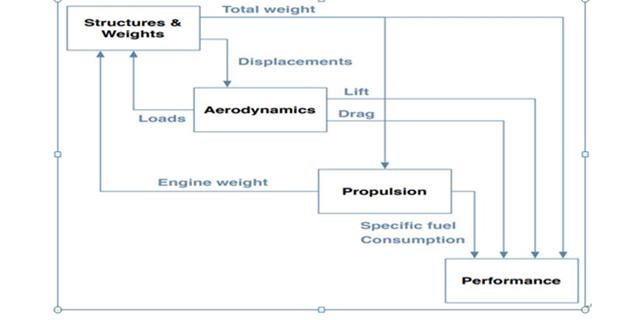
Concerning the uncertainty in the conceptual design stage as outlined earlier, established methods are based on probabilistic theories and design methods. These methods involve the use of Probability Density Functions (PDFs) and Cumulative Distribution Functions (CDFs) for each design constraint. The data for several design constraints is then collectively plotted and analyzed. This cumulative data gives the designer a clear insight into the design region and whether he or she needs to relax any constraint or introduce any technology for the overall betterment of the design cycle.
In short, the designer creates a relation between input and output variables keeping in view the variability of input factors.
Preliminary Design
This stage is monumentally critical to size the various design factors for the concept finalized in the first phase. This requires in-depth study and analysis of the interdisciplinary interactions between the various systems and subsystems of an aircraft. For instance, the concept of aeroelasticity is the combination of structural mechanics and aerodynamics.
In today’s modern engineering era, the preliminary design phase also includes considerations like reliability, maintainability, stability, and control, safety, and economics. Now we will discuss in greater detail the challenges that lie in this design phase and the optimal way to face them.
Sophisticated, complex, and accurate modeling requires the use of advanced numerical algorithms e.g. Computational Fluid Dynamics and Finite Element Analysis. However, exceptionally high computational costs mean another challenge for the designers. The following diagram figuratively depicts the tradeoff involved in choosing high fidelity tools vs using simple simulations.
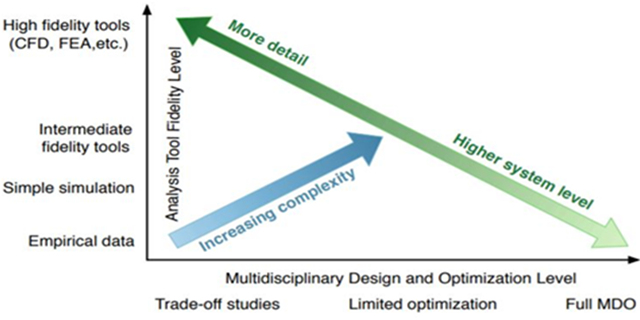
Moving towards complex and high fidelity tools not only means higher computational costs but also there is the challenge to deal with several variables, often amounting to hundreds, and their interdependence too. Thus, significant time is spent on identifying and mapping the simulation environment. (The story is not ending!!!)
If you are still interested in the content, please read the Aircraft Design (Part 2): Expanding Horizons. Thank you.

